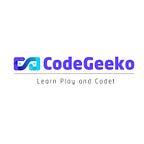The Complete Guide to Non-Fungible Tokens (NFT) Applications
NFTs — Non-Fungible Tokens
NFTs are one of the latest forms of digital assets. NFTs are an acronym for Non-Fungible Tokens. NFT for artist is a platform that allows people to buy and sell art without a middleman.
It is a decentralized system that will allow artists to take control of their work and put it in the hands of the consumer. NFT for artist is a new type of crypto-asset that can be bought and sold like stocks or bonds. However, the difference is that these tokens are not securities and cannot be converted back into cash. They are limited to one art piece with its corresponding identity number.
The NFT for artist was created by the startup Codex. It allows artists to create unique digital assets tied to their artwork which can then be verified by third party organizations like museums or galleries. The information about the artwork is stored on blockchain, in a decentralized software system that cannot be hacked or tampered with.
The most popular use case for Non-Fungible Tokens is the collectibles market.
Some examples of this are
- Cryptokitties,
- ERC-721 tokens
- CryptoPunks.
Collectibles are only part of what NFTs can be used for — they can also function as a license or ownership token, like with CryptoKitties and CryptoPunks respectively.
Steps to get the NFT
NFTs are digital assets that are not interchangeable with one another. These can be used to represent different types of goods or services, such as a parking spot or a collectible. These tokens can be traded on crypto exchanges and often have a value linked to the real-world good they represent.
1) Register your NFTs in a centralized registry
2) Create an ERC-721 token contract for each of your NFTs
3) Use callback functions to store information about your NFT in the registry when you transfer it from one individual to another
Application of NFT’s
NFTs are digital, blockchain-based assets that can represent anything from a physical object to virtual goods or even a service offered. They can be used as incentives for many games such as CryptoKitties and rare collectibles like Beanie Babies. And if you’re thinking about creating your own NFT-powered game, there are plenty of open source templates out there to help you on your way.
NFTs have an advantage over other types of virtual goods because they are non-fungible items with unique attributes that cannot be easily replicated or destroyed. This gives them utility in many different applications outside of the gaming world — including the potential for real world financial transactions.
NFT in Gaming
Non-Fungible Tokens (NFT) are a new form of in-game assets. The player can buy, trade and sell these in-game items in a secondary market. NFTs can be used for in-game customization, customizing the player’s avatar and exclusive access to content.
NFTs are also used to create digital scarcity. They help people experience the feeling that they own something that is rare and valuable like an Apple Watch or a piece of real estate. As it creates digital scarcity, it also creates an investment potential but there is little chance of traditional valuation due to their digital nature.
The development of blockchain gaming has led to the creation of NFTs and it has opened up new opportunities for game developers and gamers alike
NFTs for Entertainment
Non-Fungible Tokens (NFTs) are a new form of digital assets that use the Ethereum blockchain as a storage mechanism to record and track ownership. These tokens can be used as an alternative to traditional intellectual property such as copyrights and patents. NFTs allow for digital scarcity to be created, which can then be used to create unique digital goods and games that cannot be reproduced or copied.
There is a range of uses for NFTs in entertainment: From tickets and merchandise, to virtual reality avatars and in-game items. One company, ETHBerlin, has developed their own virtual reality game called ‘CryptoKitties’ based on the Ethereum blockchain. The game allows players to buy, sell, adopt and trade virtual cats with other players through smart contracts
Python for Non Fungible tokens
Python is a programming language that is used for a variety of applications including non fungible tokens. Python applications in non fungible tokens can provide increased security and increased blockchain performance.
Python has many applications in the blockchain environment because it is powerful, secure, and fast. There are many different ways that Python can be applied to Non Fungible Tokens, providing added security as well as performance benefits to the blockchain environment
CodeGeeko.com — Python Programming for kids
CodeGeeko is a company that teaches Artificial Intelligence to kids in Python programming. They have designed this program for kids aged between 8–14 years so they can have the necessary skillset to be able to code. This program has been designed in collaboration with professional programmers so it focuses on teaching children the basic skillset required for future careers in coding. The way CodeGeeko works is by teaching kids about Artificial Intelligence and how it’s used in the real world, and then teaching them how to code using Python programming languages. (www.codegeeko.com)
